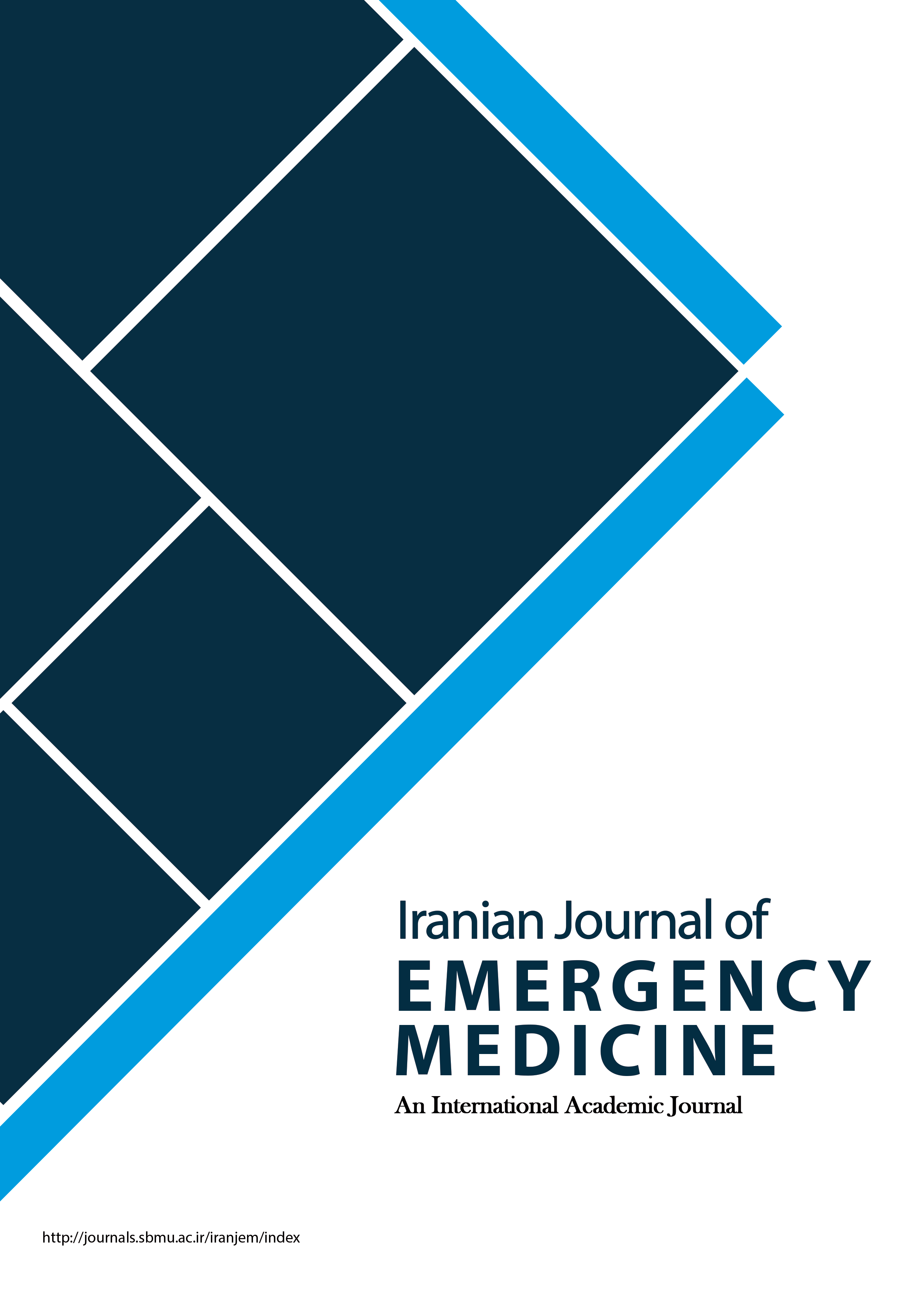Value of mid-regional pro-atrial natriuretic peptide and brain natriuretic peptide for detection of acute heart failure in patients with dyspnea: diagnostic accuracy study
Iranian Journal of Emergency Medicine,
Vol. 10 No. 1 (2023),
30 November 2022,
https://doi.org/10.22037/ijem.v10i1.42165
Background: The measurement of mid-regional pro-atrial natriuretic peptide (MR-proANP) as a clinical biomarker has become a potent diagnostic value for identifying patients with heart failure. This study aimed to determine the diagnostic value of MR-proANP in heart failure in comparison with brain natriuretic peptide (BNP).
Methods: This prospective diagnostic accuracy study evaluated two biomarkers in consecutive patients presenting to the emergency department (ED) with acute dyspnea. Blood samples were collected immediately from the participants. A diagnostic value of MR-proANP versus BNP for the diagnosis of acute heart failure was analyzed. All patients underwent transthoracic echocardiography to classify the diagnosis as dyspnea due to heart failure or due to other causes. Patients without a subsequent diagnosis of heart failure were compared as the controls. The diagnostic performance was evaluated by receiver operating characteristics (ROC) analysis.
Results: Overall, 100 patients with heart failure and 85 controls were included in the study. The plasma levels of BNP and MR-proANP were significantly higher in the heart failure patients than in the control patients (p<0.001). MR-proANP levels significantly correlated with BNP levels (r=0.745, p<0.001). The ROC analysis demonstrated an area under the curve (AUC) of 0.872 (95% CI: 0.815–0.917) for MR-proANP and an AUC of 0.814 (95% CI: 0.751–0.868) for BNP. The AUC of MR-proANP was significantly higher than BNP to detect heart failure in patients with dyspnea (p=0.008). The optimal cut-off point of plasma MR-proANP was 134 pmol/L (sensitivity: 88.1%; specificity: 84.5%; PPV: 87.3%; NPV: 85.5%).
Conclusion: MR-proANP may be a useful biomarker for the diagnosis of acute heart failure in patients with dyspnea presenting to ED. The diagnostic value of MR-proANP was superior to BNP for diagnosing heart failure.



